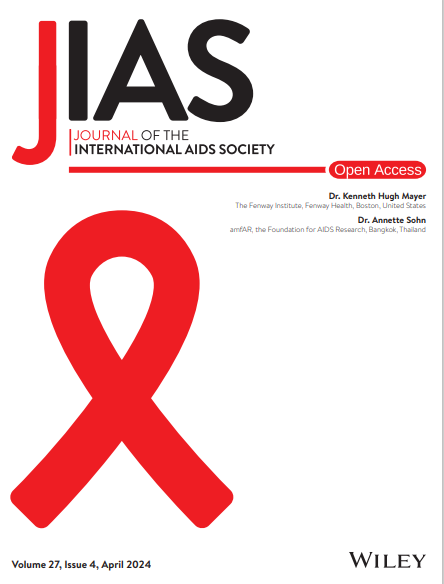Awareness and intention to use event-driven and long-acting injectable pre-exposure prophylaxis among adolescent and young men who have sex with men and transgender women in Brazil: a cross-sectional study
Abstract
Introduction
New pre-exposure prophylaxis (PrEP) options, including event-driven and long-acting injectable, may enhance HIV prevention strategies among adolescents and youth. This study examined awareness and intention to use event-driven and long-acting injectable PrEP, along with associated factors, among adolescent and young men who have sex with men and transgender women.
Methods
A cross-sectional study was conducted between December 2020 and February 2022 among men who have sex with men and young transgender women aged 15–20 years, who participated in a daily oral PrEP cohort study in Salvador and São Paulo, Brazil. Binomial logistic regression models analysed factors associated with the intention to use event-driven and long-acting injectable PrEP.
Results
A total of 1221 participants were enrolled in the cohort at the time of this analysis, with 597 responding to the survey. Awareness of event-driven and long-acting injectable PrEP was reported by 15.3% and 18.0% of participants, respectively. Intention to use event-driven PrEP was reported by 56.4% of participants, while 81.5% expressed intention to use long-acting injectable PrEP. Participants with lower and moderate adherence to daily oral PrEP were more likely to intend to use event-driven PrEP (OR = 1.79; 95% CI: 1.04–3.08), whereas those who reported always or often using condoms in insertive anal sex with steady or casual partners were less likely to intend to use event-driven PrEP (OR = 0.37; 95% CI: 0.15–0.90). For long-acting injectable PrEP, participants with middle (OR = 1.93; 95% CI: 1.05–3.53) or low socio-economic status (OR = 3.13; 95% CI: 1.30–7.51) and those reporting three or more casual partners in the past 3 months (OR = 2.25; 95% CI: 1.30–3.89) were more likely to intend to use long-acting injectable PrEP. Conversely, participants who had never used daily oral PrEP were less likely to intend to use long-acting injectable PrEP (OR = 0.31; 95% CI: 0.11–0.92).
Conclusions
Adolescents and young people in Brazil demonstrated a stronger preference for long-acting injectable over event-driven PrEP, with sexual behaviour patterns significantly influencing choices. Expanding prevention options may enhance PrEP uptake and adherence, improving HIV prevention strategies among adolescents and young adults.

 求助内容:
求助内容: 应助结果提醒方式:
应助结果提醒方式:


